
Follow these tips on how to match your emulsion to your ink system
The consumer and retailers of today's market have driven the textile embellishment industry to research and develop new technologies to meet demands. Those demands include more environmentally friendly inks and prints with a softer hand than that which traditional plastisol inks can provide.
The consumer and retailers of today's market have driven the textile embellishment industry to research and develop new technologies to meet demands. Those demands include more environmentally friendly inks and prints with a softer hand than that which traditional plastisol inks can provide.
This situation has many printers researching the new ink technologies, which also have been produced through those demands. The ink lines offered today are a combination of both new and old technologies. Let's take a look.
Friday, March 18, 2016/Author: Anonym/Number of views (1494)/Comments (0)/
Tags:

Most textile screen printers today are well aware of the advantages of adding a direct-to-screen (DTS) system into their pre-press workflow. While they can be an expensive addition to a screen shop, in most cases they pay for themselves rather quickly by eliminating film, and reducing labor and overhead costs. A DTS can also provide an immediate quality improvement if it replaces an inkjet or toner-based film workflow.
So what’s important to look for when shopping for a DTS system? In today’s market there are several options, which is good for the buyer, but can make it more difficult to be sure you are purchasing the right product for your shop. To help decide what system is your best match, let’s start by defining the types of DTS equipment available today.
Wednesday, March 16, 2016/Author: Anonym/Number of views (1511)/Comments (0)/
Tags:
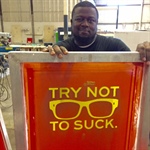
New article from Marshall Atkinson at atkinsontshirt.com. Excuses. We all make them. Your employees probably more so, but owners and managers are capable of launching them as well. I’m no saint on this either, that’s for sure.
They are as common as dirt…or maybe lint.
Here’s a list of the most repeated excuses that we hear every day, and what theyreally mean. Have you heard (or said) these before in your shop?
Monday, March 14, 2016/Author: Anonym/Number of views (1539)/Comments (0)/
Tags:
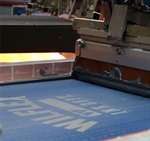
New Tip from PolyOne Wilflex: To create a softer surface, many textile manufacturers are brushing fibers. On fibrous materials, use a smoothing screen to “iron-out” and lay down the fabrics. Any screen can be used that has no open area and can be printed on with any base or clear using a moderate pressure. No ink is applied to the fabric, but this step lays down fibers and creates a smoother surface, eliminating the need for an extra print stroke.
Thursday, March 10, 2016/Author: Anonym/Number of views (1504)/Comments (0)/
Tags:

Direct-to-garment printing is sexy. Pretreating, however, is an unsexy yet necessary evil for printing white ink. Despite its unattractive reputation, pretreating helps white ink adhere and gel on a shirt while creating an underbase for the additional ink layers. Pretreating also aids in the ink’s wash durability through repeated cycles.
Still, most direct-to-garment users don’t pretreat white or light-colored garments that don’t require white ink. This is completely normal as most ink sets are designed to adhere to and work best with 100 percent cotton, alleviating any need to pretreat. That’s because pretreatment is only for white ink printing, right? Not so fast.
Wednesday, March 9, 2016/Author: Anonym/Number of views (1570)/Comments (0)/
Tags:
Tuesday, March 8, 2016/Author: Anonym/Number of views (1496)/Comments (0)/
Tags:
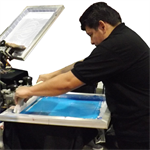
When I demonstrate screen printing techniques at seminars, people often ask why I don’t pull the squeegee perpendicular to the design. Instead, the squeegee is always skewed a few degrees. This technique is a product of evolution.
Friday, March 4, 2016/Author: Anonym/Number of views (1752)/Comments (0)/
Tags:
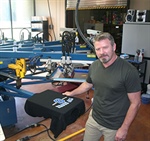
1. Research Your Garment
Look at the fiber composition, the color of the garment, the stretch of the garment, the functionality of the garment and the weave and texture of the garment. Then decide what ink is needed. Is it necessary to have bleed resistance, extra adhesion, elongation, both bleed resistance and elongation or both extra adhesion and elongation? While deciding what ink is best for the job, make sure to understand the limitations of the ink and the garment.
Wednesday, March 2, 2016/Author: Anonym/Number of views (1644)/Comments (0)/
Tags:
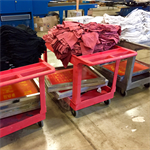
New article from Marshall Atkinson at atkinsontshirt.com. First and foremost in our shops, we only have so many hours in the day. The big question is what are the people in your shop doing with that time? Are they doing work that matters? How do you know for sure?
One of my favorite Peter Drucker quotes is "Efficiency is doing the thing right. Effectiveness is doing the right thing."
So how are we getting our staff to do the right thing constantly? I don't even think we should be a matter of choice. They shouldn't have to choose to do the right thing. We have to make it an expectation. Part of our culture.
That my friend, is trickier than it seems.
If you wanted to build a culture that emphasizes being effective by doing the right thing, where would you start? How about these:
Monday, February 29, 2016/Author: Anonym/Number of views (1691)/Comments (0)/
Tags:
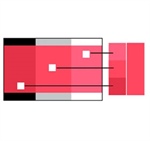
While color can be created with ink that is pre-mixed or formulated with ink mixing systems, the substrate will always challenge the true weakness in all inks -- opacity. Ink manufacturers match color based on a standard printing parameter on a white cotton substrate. This is a necessity to maintain control of a standard matching requirement, but it falls short under certain circumstances. When an ink is printed on a dark substrate, or worse, a dark polyester blend, it requires a base plate.
Thursday, February 25, 2016/Author: Anonym/Number of views (1546)/Comments (0)/
Tags: